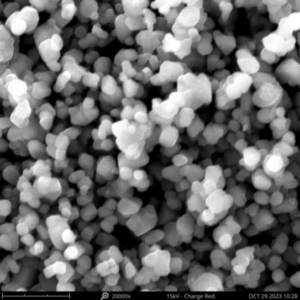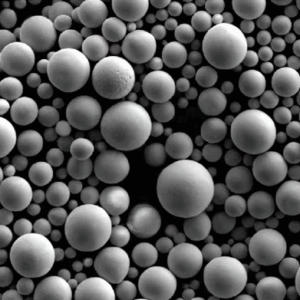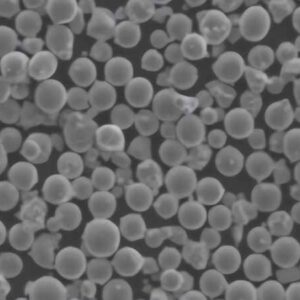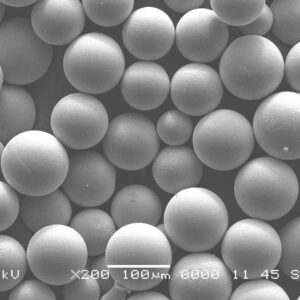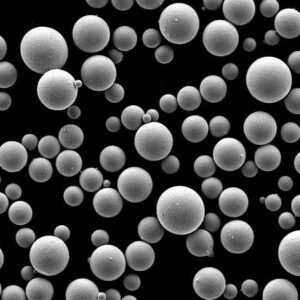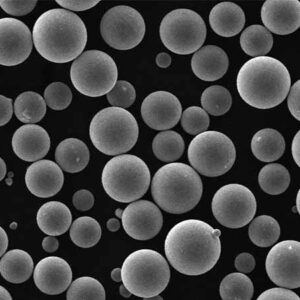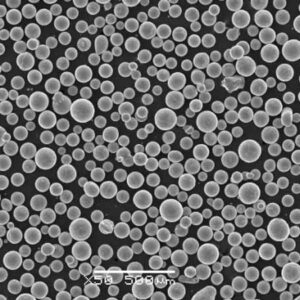The world of metal additive manufacturing (AM), also known as 3D printing, is abuzz with innovation. New materials and techniques are constantly emerging, pushing the boundaries of what’s possible. But amidst this ever-evolving landscape, one material stands out for its reliability and versatility: Al 3004 powder.
Compositional of Al 3044 Powder
Al 3004 powder is a metal powder specifically formulated for use in additive manufacturing processes. It’s derived from aluminum alloy 3004, a workhorse material known for its excellent combination of strength, formability, and corrosion resistance. This makes it a popular choice for a wide range of applications, from building components to crafting decorative pieces.
Here’s a closer look at the key components of Al 3004 powder:
| Component | Percentage (wt%) | Role |
|---|---|---|
| Aluminum (Al) | Primary element (balance) | Provides the base structure and lightweight properties. |
| Manganese (Mn) | 1.0-1.5 | Enhances strength and workability. |
| Magnesium (Mg) | 0.5-1.2 | Improves corrosion resistance and weldability. |
| Silicon (Si) | Up to 0.6 | Contributes to strength and castability (minimal in powder form). |
| Iron (Fe) | Up to 0.5 | ناخالصی (Najs = Impurity) that can affect mechanical properties (present in small quantities). |
| Copper (Cu) | Up to 0.3 | ناخالصی (Najs = Impurity) that can influence electrical conductivity (trace amounts). |

Characteristics of Al 3004 Powder
So, what makes Al 3004 powder such a compelling choice for additive manufacturing? Let’s delve into its key characteristics:
- Excellent Workability: Al 3004 powder boasts superior workability, allowing for intricate designs and complex geometries to be printed with ease. Imagine crafting lightweight brackets with internal channels or artistic sculptures with delicate details – Al 3044 powder makes it possible.
- High Strength-to-Weight Ratio: This powder delivers a remarkable balance of strength and weight. Compared to pure aluminum, Al 3004 offers enhanced mechanical properties thanks to the presence of manganese. This makes it ideal for applications where weight reduction is crucial, such as in aerospace and automotive components.
- Superior Corrosion Resistance: Aluminum is naturally resistant to corrosion, and Al 3004 powder takes this a step further. The presence of magnesium in the alloy composition bolsters its ability to withstand harsh environments. This makes it suitable for applications exposed to moisture, salt, or other corrosive elements.
- Good Weldability: Al 3004 powder exhibits good weldability, a valuable attribute for post-processing techniques like joining 3D-printed parts or attaching them to other metal components. This allows for the creation of larger and more complex structures.
- Recyclability: Sustainability is a growing concern in manufacturing. Al 3004 powder shines in this aspect too. It’s a recyclable material, minimizing environmental impact and fostering a more eco-friendly approach to production.
Applications of Al 3004 Powder
The versatility of Al 3004 powder translates into a vast array of applications across different industries. Here are some prominent examples:
| Industry | Applications | Benefits |
|---|---|---|
| Aerospace: | Aircraft components, lightweight housings, heat exchangers | High strength-to-weight ratio, excellent corrosion resistance |
| Automotive: | Prototypes, custom brackets, interior components | Workability for complex designs, weight reduction for improved fuel efficiency |
| Consumer Electronics: | Heatsinks for laptops and tablets, decorative housing parts | Good thermal conductivity (of aluminum), aesthetics achievable through post-processing |
| Construction: | Architectural models, lightweight cladding panels | Workability for intricate designs, corrosion resistance for outdoor applications |
| Medical & Dental: | Prosthetics, surgical instruments, custom medical implants | Biocompatible with proper post-processing, good strength for specific applications |
10+ Metal Powders for Additive Manufacturing
Al 3004 powder may be a versatile workhorse, but the world of metal additive manufacturing boasts a diverse range of metal powders, each offering distinct properties and advantages. Let’s delve into 10+ of these contenders, exploring their strengths and ideal applications:
- Stainless Steel 316L: As mentioned earlier, Stainless Steel 316L powder reigns supreme when it comes to corrosion resistance. The presence of molybdenum in its composition grants it exceptional resilience against saltwater, chemicals, and high temperatures. This makes it a go-to choice for applications like marine components, chemical processing equipment, and even medical implants.
- Titanium 6Al-4V (Ti-6Al-4V): This titanium alloy powder offers an enticing blend of high strength, low weight, and excellent biocompatibility. Compared to Al 3004, Ti-6Al-4V boasts significantly higher strength, making it suitable for demanding applications in the aerospace and automotive industries, particularly for parts requiring high strength-to-weight ratios like aircraft landing gear components. However, its higher cost and stricter printing parameters compared to Al 3004 powder are factors to consider.
- Inconel 625: Inconel 625 powder takes heat resistance to a whole new level. This nickel-chromium-based superalloy powder thrives in extreme temperatures and harsh environments. Imagine printing parts for jet engines or components for high-performance power plants – Inconel 625 powder is up to the challenge. While it shares some similarities with stainless steel in terms of corrosion resistance, Inconel outshines in high-temperature applications. On the flip side, its cost is significantly higher compared to both Al 3004 and even Ti-6Al-4V powders.
- Aluminum Silicon Magnesium (AlSiMg): This family of aluminum alloy powders prioritizes castability, making them ideal for applications where intricate geometries and smooth surface finishes are paramount. Think of complex engine blocks or intricate heat sinks – AlSiMg powders deliver exceptional results. Compared to Al 3004, AlSiMg offers better castability due to the presence of silicon, but with a slight trade-off in strength.
- Copper: Pure copper powder unlocks the potential for creating conductive components through additive manufacturing. Imagine crafting intricate electrical components or even heat exchangers with superior thermal conductivity – copper powder makes it possible. However, copper powder can be susceptible to oxidation during the printing process, requiring careful handling and storage. When it comes to conductivity, copper reigns supreme compared to Al 3004, but its mechanical strength is lower.
- Nickel: Similar to copper, nickel powder offers excellent electrical conductivity and finds applications in similar domains. Additionally, its compatibility with electroplating makes it suitable for creating components with enhanced surface properties. While both copper and nickel excel in conductivity, nickel offers a bit more mechanical strength.
- Tool Steel: This category encompasses various tool steel alloy powders formulated for creating wear-resistant and high-hardness tools and components. Imagine printing custom cutting dies or punches – tool steel powders make it a reality. They are significantly stronger than Al 3004 but come at a premium cost and require specific printing parameters due to their higher melting points.
- Cobalt Chrome (CoCr): This biocompatible alloy powder is another strong contender for medical and dental applications. Offering a good balance of strength, corrosion resistance, and biocompatibility, CoCr powder is used for manufacturing implants like hip replacements or dental crowns. While similar to Ti-6Al-4V in terms of biocompatibility, CoCr can be slightly more cost-effective.
- NbTi (Niobium-Titanium): This unique alloy powder offers superconductivity properties, making it valuable for applications in the medical field, particularly for components in Magnetic Resonance Imaging (MRI) machines. While not as widely used as other metal powders on this list, NbTi powder plays a crucial role in specific technological advancements.
- Precious Metal Powders (Gold, Silver, etc.): Even precious metals like gold and silver can be found in powder form for additive manufacturing applications. Their use is primarily for creating decorative pieces or components with unique electrical properties. The cost of these precious metal powders is significantly higher compared to the others on this list.
Considerations for Choosing a Metal Powder
With this diverse array of metal powders at your disposal, selecting the ideal one for your project requires careful consideration of several key factors:
1. Application Requirements:
- Strength: The required strength of the final printed part is paramount. For high-stress applications, powders like Ti-6Al-4V or tool steel might be better suited compared to Al 3004.
- Weight: If weight reduction is a critical factor, Al 3004 excels with its excellent strength-to-weight ratio. However, for situations demanding even lighter weight, pure copper or titanium might be explored.
- Corrosion Resistance: Environments with high humidity, salt, or chemicals necessitate corrosion-resistant powders like stainless steel 316L or Inconel 625. Al 3004 offers good corrosion resistance but might not be suitable for extremely harsh environments.
- Conductivity: For applications requiring high electrical conductivity, copper or nickel powders are the clear choices. Al 3004 has lower conductivity compared to these options.
- Biocompatibility: For medical implants or other applications requiring biocompatible materials, CoCr or Ti-6Al-4V powders are preferred choices.
2. Printability:
- Melting Point: Powders with lower melting points, like Al 3004, are generally easier to print with standard AM equipment. Powders like Inconel 625 might require higher printing temperatures and specialized machines.
- Flowability: The powder’s ability to flow freely and pack densely during the printing process is crucial. Al 3004 exhibits good flowability, but some metal powders might require special handling or additives to ensure optimal flow.
- Reactivity: Certain metal powders, like titanium, can be more reactive with oxygen during the printing process. This might necessitate a controlled atmosphere printing environment, unlike Al 3004 which can be printed in a wider range of environments.
3. Cost:
- Material Cost: The cost of the metal powder itself varies significantly. Al 3004 sits at a relatively affordable price point compared to precious metals or exotic alloys like Inconel 625.
- Processing Costs: Certain metal powders might require specialized printing parameters or post-processing techniques, impacting the overall cost. Al 3004 is generally less demanding in terms of processing compared to some other options.
4. Availability:
- Powder Supplier Network: The ease of acquiring the desired metal powder is a factor to consider. Al 3004 is a widely available powder with a well-established supplier network. More specialized powders might have limited suppliers.
Safety Precautions for Using Metal Powders
Metal powders can pose certain safety hazards if not handled appropriately. Here are some essential precautions to take:
- Respiratory Protection: Always wear a respirator with appropriate filters when handling metal powders to avoid inhaling dust particles.
- Skin Protection: Wear gloves and protective clothing to prevent skin contact with metal powders.
- Eye Protection: Safety glasses are essential to shield your eyes from dust particles during handling and printing processes.
- Flammable Powders: Some metal powders, like magnesium, can be flammable. Exercise caution and proper storage practices to avoid fire hazards.
- Proper Disposal: Metal powders should not be disposed of in regular trash. Consult safety data sheets (SDS) for proper disposal guidelines.
Finding the Right Source: A Look at Metal Powder Suppliers
Sourcing your metal powder from a reputable supplier is crucial. Here are some key aspects to consider when choosing a supplier:
- Material Selection: Ensure the supplier offers the specific metal powder you require, with options for various particle sizes and grades.
- Quality Control: Look for suppliers with a commitment to quality control, ensuring consistent powder properties for optimal printing results.
- Technical Support: A supplier with knowledgeable staff who can provide technical guidance and answer your questions is invaluable.
- Pricing and Availability: Compare pricing and lead times between different suppliers to find the best fit for your project.

FAQs
Here’s a quick reference table addressing frequently asked questions regarding Al 3004 powder:
| Question | Answer |
|---|---|
| What are the benefits of using Al 3004 powder? | Al 3004 powder offers a good balance of strength, formability, corrosion resistance, and recyclability, making it a versatile and cost-effective choice for many applications. |
| What are some limitations of Al 3004 powder? | Compared to some other metal powders, Al 3004 might not be the ideal choice for applications requiring extremely high strength, superior conductivity, or the highest level of corrosion resistance in harsh environments. |
| What are some typical applications of Al 3004 powder? | Al 3004 powder finds use in a wide range of industries, including aerospace (lightweight components), automotive (prototypes, brackets), consumer electronics (heatsinks), construction (architectural models), and even medical and dental fields (certain implants with proper post-processing). |
| How does Al 3004 powder compare to other popular metal powders like stainless steel 316L? | While both offer good corrosion resistance, stainless steel 316L excels in harsher environments due to the presence of molybdenum. However, Al 3004 is generally more affordable and easier to print. |
| How does Al 3004 powder compare to titanium 6Al-4V powder? | Titanium offers significantly higher strength than Al 3004, making it suitable for high-stress applications. However, titanium powder is more expensive and requires stricter printing parameters. |

